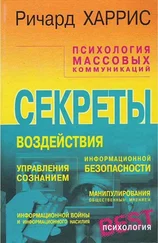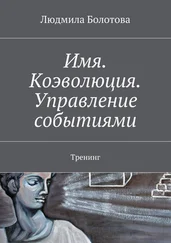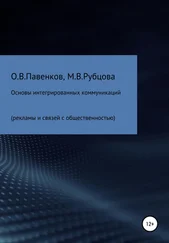Kenton B., Penn S. Change, Conflict and Community: Challenging Thought and Action. Amsterdam: Elsevier, 2009.
Kerr N. L., MacCoun R.J., Kramer G. P. Bias in judgment: Comparing individuals and group // Psychological Review. 1996. Vol. 103. No. 4.
Kirkpatrick D. L. Techniques for evaluating training programmes // Journal of the American Society of Training Directors. 1959. Vol. 13. No. 1.
Kleck R. Congruence between the communicative functions // British Journal of Social Psychology. 1968. Vol. 7. No. 4.
Kleiner A. The Age of Heretics: Heroes, Outlaws and the Forerunners of Corporate Change. N.Y.: Currency/Doubleday, 1996.
Kluger A. N., DeNisi A. The ef ects of feedback interventions on performance: A his tori cal review, a meta-analysis, and a preliminary feedback intervention theory // Psychological Bulletin. 1996. Vol. 119. No. 2.
Knapp M., Hall J . Nonverbal Communication in Human Interaction. Orlando: Harcourt Brace College Publishers, 1997.
Kravitz D. A., Martin B. Ringelman rediscovered: The original article // Journal of Personality and Social Psychology. 1986. Vol. 50. No. 5.
LaFrance M. Nonverbal synchrony and rapport // Social Psychology. 1979. Vol. 42. No. 1.
LaFrance M., Ickes W. Posture mirroring and interactional involvement: Sex and sextyping ef ects // Journal of Nonverbal Behavior. 1981. Vol. 5.
Lazarus R. S. Coping theory and research: Past, present and future // Psychosomatic Medicine. 1993. Vol. 55.
Leary M. R., Nezlek J. B . Self-presentation in everyday interactions // Journal of Personality and Social Psychology. 1994. Vol. 67. No. 4.
Leary M. R., Kowalski R. M. Impression management: A literature review // Psychological Bulletin. 1990. No. 107.
Leavitt H. J. Some ef ects of certain communication patterns on group performance // The Journal of Abnormal and Social Psychology. 1951. Vol. 46.
Lehr U., Thome H. Altagspsychology. Methoden. Ergebnisse. Darmstadt: Wis sens chaftli che Buchgesellschaft, 1991.
Lippitt R. Training in community relations: A research exploration toward new group skills. N.Y.: Harpers. 1949.
Luft J., Ingham H. The Johari window, a graphic model of interpersonal awareness // Proceedings of the Western Training Laboratory in Group Development. Los Angeles: UCLA, 1955.
Mann S., Robertson I. T. What should training evaluations evaluate? // Journal of European Industrial Training. 1996. Vol. 20. No. 9.
Mansfi eld R., Mathews D. Job Competence: A Description for Use in Vocational Education and Training. Blagdon: Further Education College, 1985.
Marcia J. E. Identity in adolescence // Handbook of Adolescent Psychology / J. Adelson (ed.). N.Y.: John Willey, 1980.
McClelland D. C. Testing for competence rather than for “intelligence” // American Psychologist. 1973. Vol. 28. No. 1.
Maslow A. H. Motivation and Personality. N.Y.: Harper & Row, 1970.
McClelland D. C. The concept of competence // L. M. Jr., Spencer, S.M Spencer. Competence at Work. N.Y.: John Wiley & Sons, 1993.
McClure J. Explanations, Accounts, and Illusions: A Critical Analysis. Cambridge: Cambridge University Press, 1991.
McKenna S. Storytelling and “real” management competence // Journal of Workplace Learning. 1999. Vol. 11. No. 3.
Mead G. H . Mind, self and society. Chicago: University of Chicago Press, 1934.
Messersmith A. S., Keyton J., Bisel R. S. Training practice as communication medium: A throughput model // American Communication Journal. 2009. Vol. 11. No. 2.
Miller E. J. Experiential Learning in Groups I: The Development of the Leicester Model. The Social Engagement of Social Science. A Tavistock Anthology. Vol. l // The Socio-Psychological Perspective / E. Trist, H. Murray (eds). Philadelphia: University of Pennsylvania Press, 1990.
Miller P., Rose N. On therapeutic authority: Psychoanalytical expertise under advanced liberalism // History of the Human Sciences. 1994. Vol. 7. No. 3.
Moreno J. L. How Kurt Lewin's “Research Center for Group Dynamics” started // Sociometry. 1953. Vol. 16.
Morgan R. B., Casper W. J. Examining the factor structure of participant reactions to training: A multidimensional approach // Human Resource Development Quarterly. 2000. Vol. 11. No. 3.
Morton T. Intimacy and reciprociti at exchange // Journal of Social Psychology. 1978. Vol. 36.
Nabi G. R., Bagley D. Graduates’ perceptions of transferable personal skills // Education + Training. 1999. Vol. 41. No. 4.
Nakano K. Coping strategies and psychological symptoms in Japanese samples // Journal of Clinical Psychology. 1991. Vol. 47.
Nijstad B. A., Stroebe W . How the group af ects the mind: A cognitive model of idea generation in group // Personality and Social Psychology Review. 2006. Vol. 10. No. 3.
O'Neill O . Justice, gender and international boundaries // British Journal of Political Science. 1990. Vol. 20. No. 4.
Papa M. J., Natalle E. J. Gender, strategy selection in interpersonal confl ict // Western Journal of Communication. 1989. Vol. 53. No. 3.
Patton M. Q. Utilization Evaluation: The New Sentury Edition. Thousand Oaks, CA: Sage, 1997.
Powell K. S., Yalcin S. Managerial training ef ectiveness: A meta-analysis 1952–2002 // Personnel Review. 2010. Vol. 39. No. 2.
Reid F . Personal constructs and social competence // Constructs of Sociality and Individuality / P. Stringer, D. Bannister (eds). L.: Methuen, 1979.
Revans R. W. Action Learning – New Techniques for Management. L.: Blond & Briggs, 1980.
Reynolds M., Snell R. Contribution to Development of Management Competence. Shef eld: Manpower Services Commission, 1988.
Rice A. K . Individual, Group and Inter-Group Proucesses. A Tavistock Anthology Vol. l // The Socio-Psychological Perspective / E. Trist, H. Murray (eds). University of Pennsylvania Press, 1990.
Richter M. Personalfűhrung: Grundlagen und betriebliche Praxis. Stuttgart: Schäf er-Poeschel, 1994. S. 503–511.
Rogers C. R. Client Centered Approach to Therapy // Psychotherapist’s Casebook: Theory and Technique in Practice of Modern Time / I. L. Kutash, A. Wolf (eds). San Francisco: Jossey-Bass, 1986.
Rogers C. R. Client-centered therapy. Boston: Hougton Mif in. 1965.
Rogers C. R., Farson R. E. Active Listening. Chicago: University of Chicago Industrial Relations Center, 1957.
Rotter J. An Introduction to Social Learning Theory. N.Y.: Holt, Rinehart, & Winston, 1972.
Rough J. Society’s Breakthrough! Bloomington: Jim Rough, 2002.
Rubin L. Liking and loving // An Invitation to Social Psychologie. 1973. Vol. 62.
Salas E., Nichols D. R., Driskell J. E. Testing three team training strategies in intact teams a meta-analysis // Small Group Research. 2007. Vol. 38. No. 4.
Salas E. et al. The science of training and development in organizations: What matters in practice // Psychological Science in the Public Interest. 2012. Vol. 13. No. 2.
Sanford A. C., Hant G. T., Bracey H. J. Communication Behavior in Organizations. Columbus, Ohio: Charles E. Merrill Publishing Co, 1976.
Schlenker B. R. Personal responsibility: Applications of the triangle model // Research in Organizational Behavior Greenwich / L. L. Cummings, B. M. Staw (eds). Greenwich, CT: JAI Press, 1997.
Schlenker B. R. et al. The triangle model of responsibility // Psychological Review. 1994. Vol. 101.
Читать дальше
Конец ознакомительного отрывка
Купить книгу












